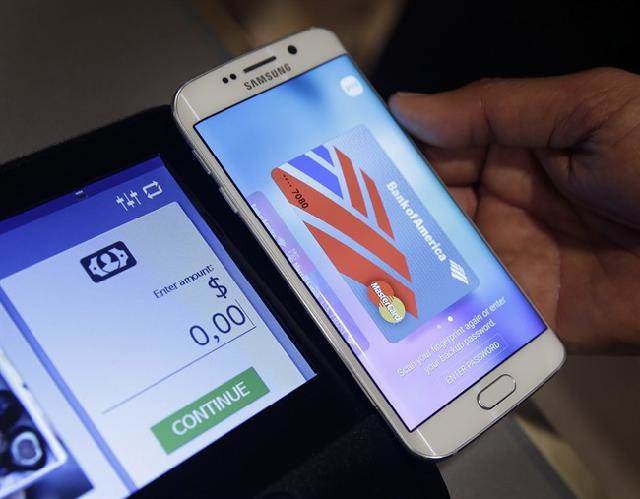It’s already the most widely used mobile payment service in the United States, but Samsung is aiming to widen the reach of its digital wallet service even more. The company said yesterday that it plans to support online transactions with Samsung Pay, as well as bring its payment service to more handsets in 2016. At the moment, the service is restricted to pricier devices such as the Galaxy Note 5, Galaxy S6, Galaxy S6 Edge and Galaxy S6 Edge Plus.
Thomas Ko, Samsung’s global co-manager of Samsung Pay, told Reuters that the company expects to bring Samsung Pay support to more handsets next year, including lower-price models. A nascent version of Samsung Pay debuted in South Korea earlier this year, and the service hit many U.S. retailers in September.
The company hasn’t said which countries are next in line to implement the service, although both Apple and Samsung have deals with China’s UnionPay bank that would let customers add their credit or debit cards to their respective electronic wallet services in that country.
Heavy Competition
By accepting payments online, Samsung Pay will try to cut into the market share held by rivals PayPal and Visa Checkout.
Samsung Pay has a leg up on rivals Apple and Android in that it uses technology that already exists in most stores — shoppers can pay by just waving their smartphones with the Samsung Pay app. Apple Pay and Google’s Android Pay, on the other hand, require retailers to install new equipment that supports NFC (near field communication) technology. Apple Pay debuted in September 2014.
The move by Samsung was partly precipitated by its purchase of LoopPay earlier this year. LoopPay’s technology allows data from a credit card or debit card to be submitted wirelessly, simulating the magnetic function of swiping a card at already existing payment terminals. The NFC technology used by Android Pay and Apple Pay doesn’t have that capability.
Samsung expects that making its service available on phones in all price ranges as well as adding online retail support will make Samsung Pay the go-to service for retailers. Samsung said that support for the service will be available for most phones within a year.
Still Some Obstacles
There are still some roadblocks that may prevent Samsung Pay from reaching that level of ubiquity. For one thing, retailers in the U.S. have only recently started adopting chip-and-PIN systems for credit cards. LoopPay has said that it is working on a way to make its service work on chip-and-PIN systems, but has not offered a timetable for when that might happen.
And even though Samsung Pay is the most widely accepted mobile wallet, many shoppers are finding that using the service is not much easier or faster than simply swiping credit cards. Nonetheless, Samsung announced in October that Samsung Pay had been used an average of eight times per U.S. user within the first four weeks of its launch.







